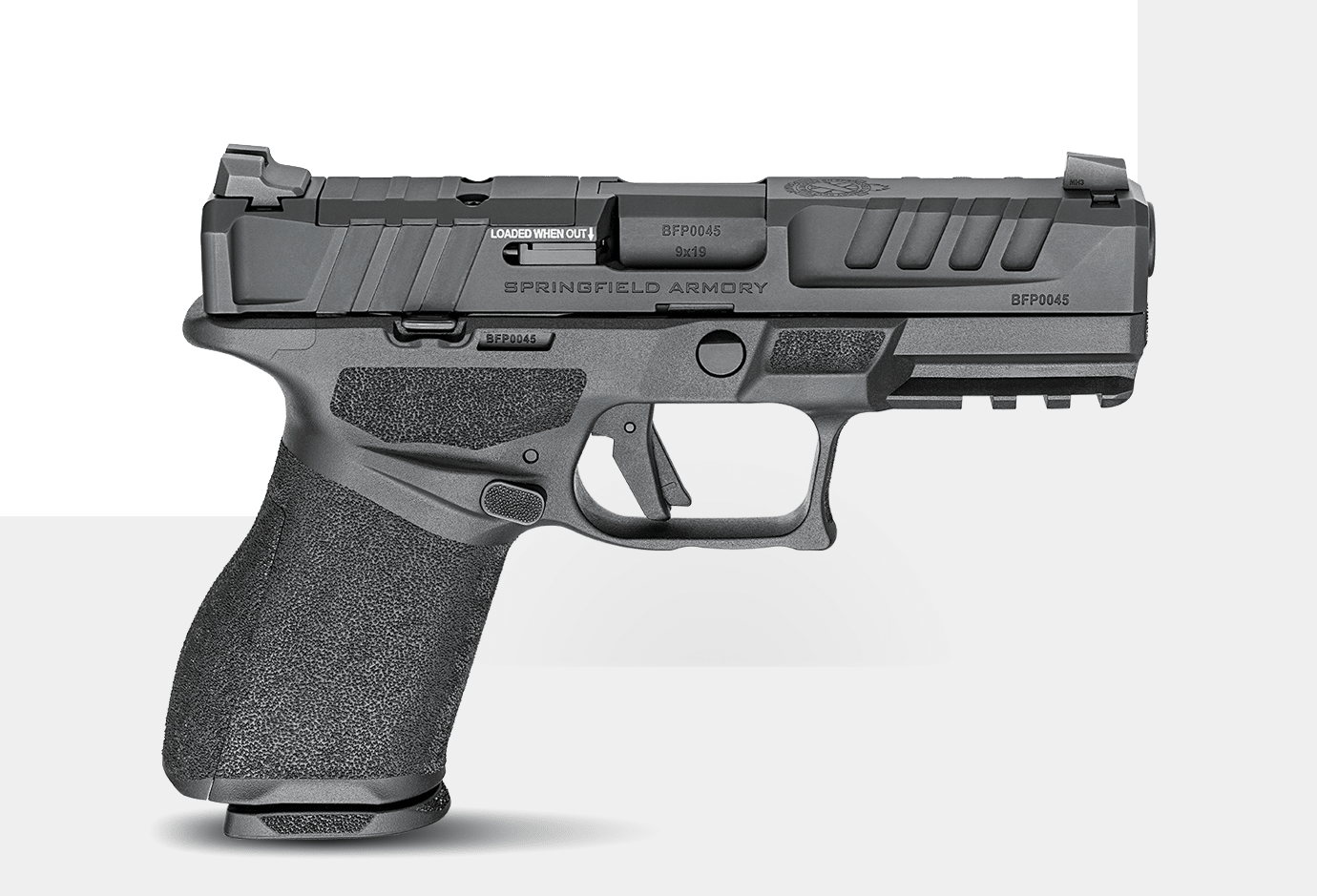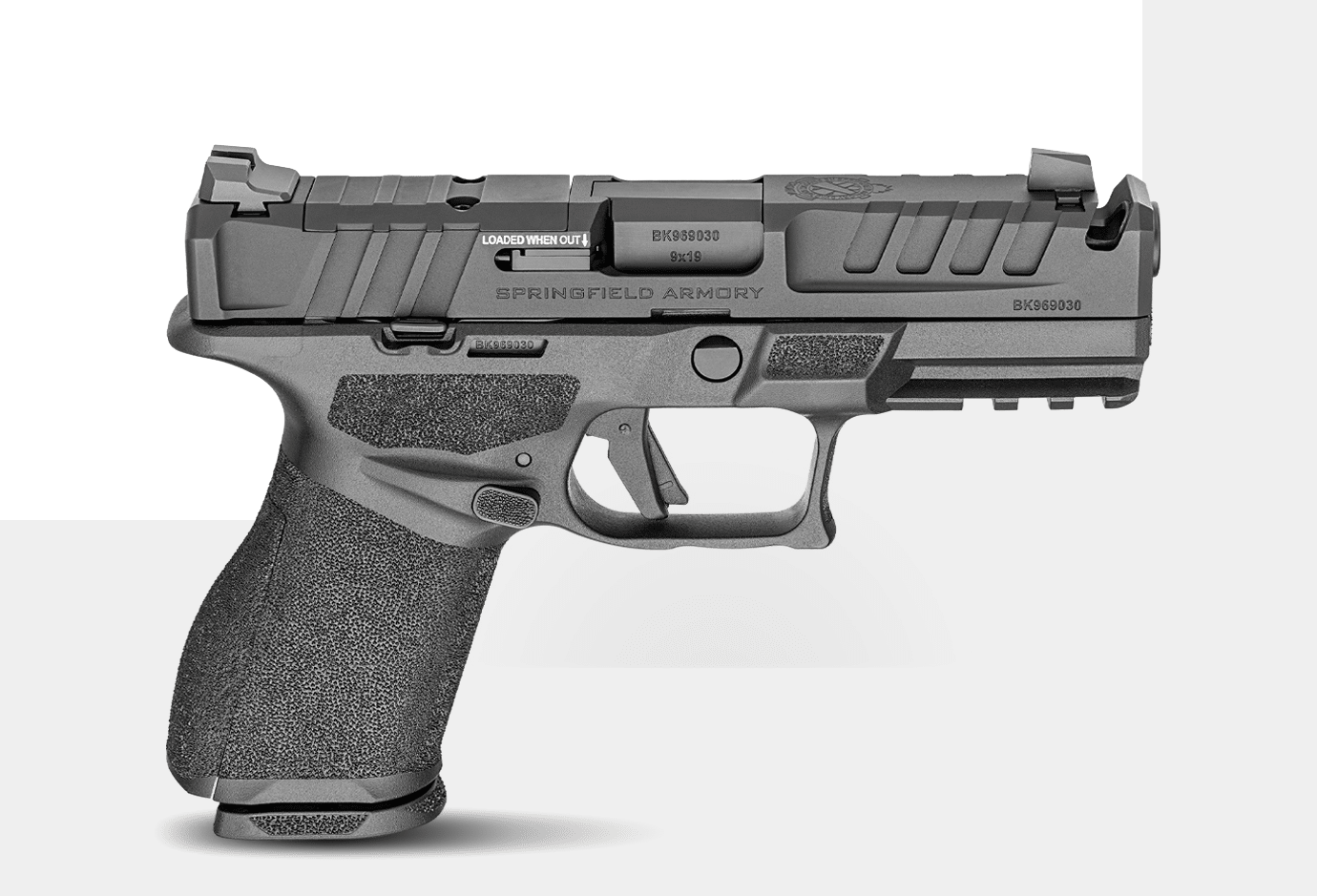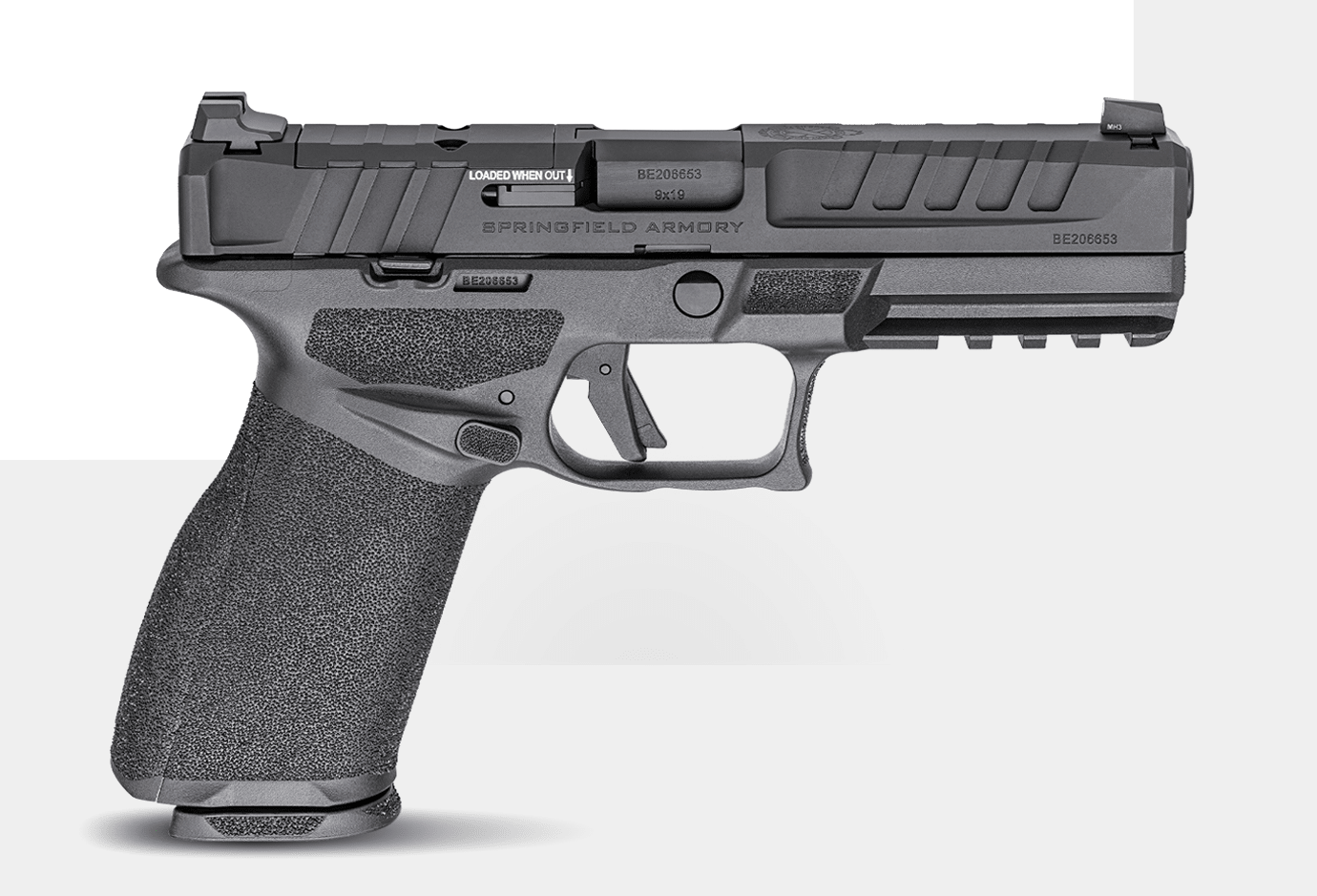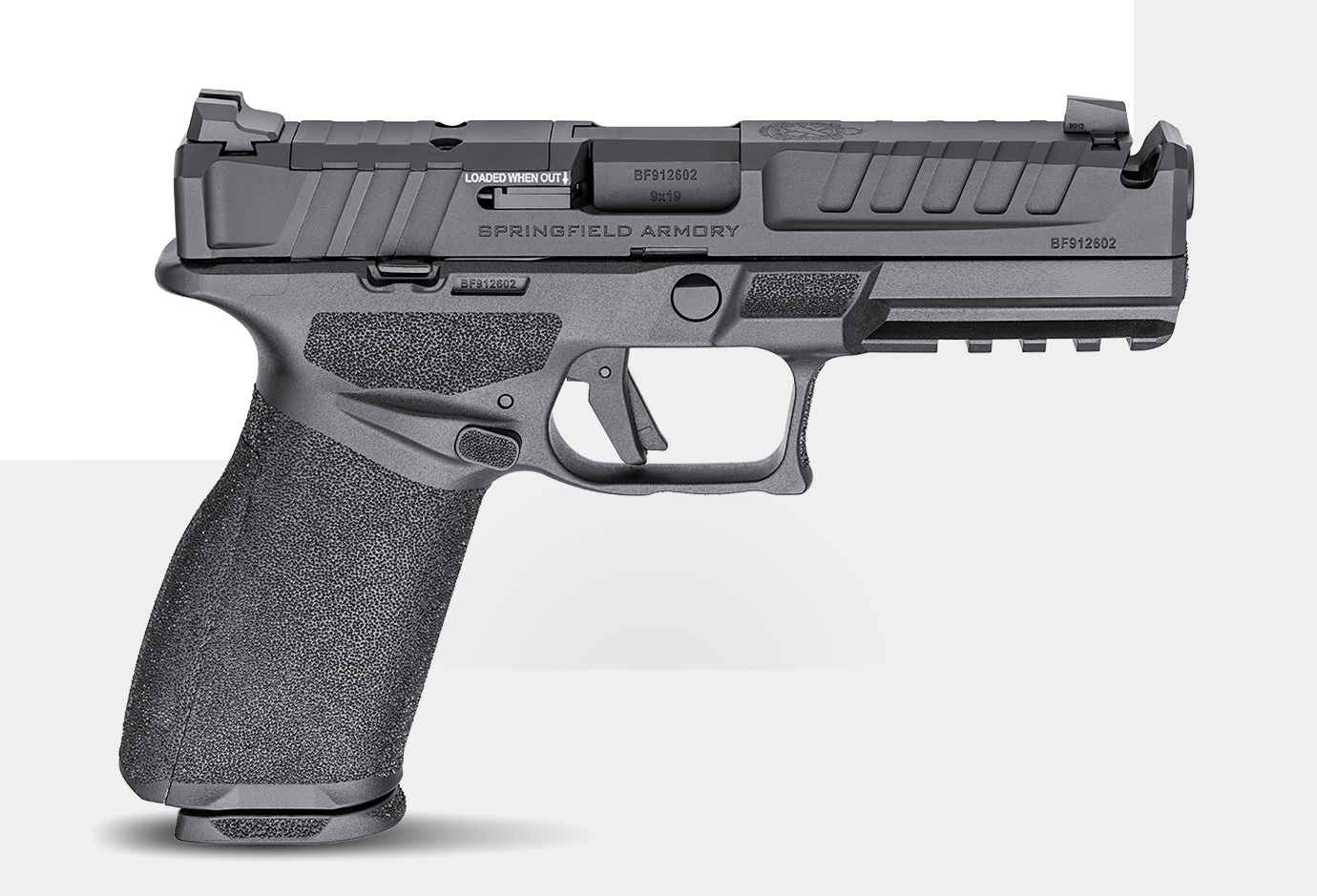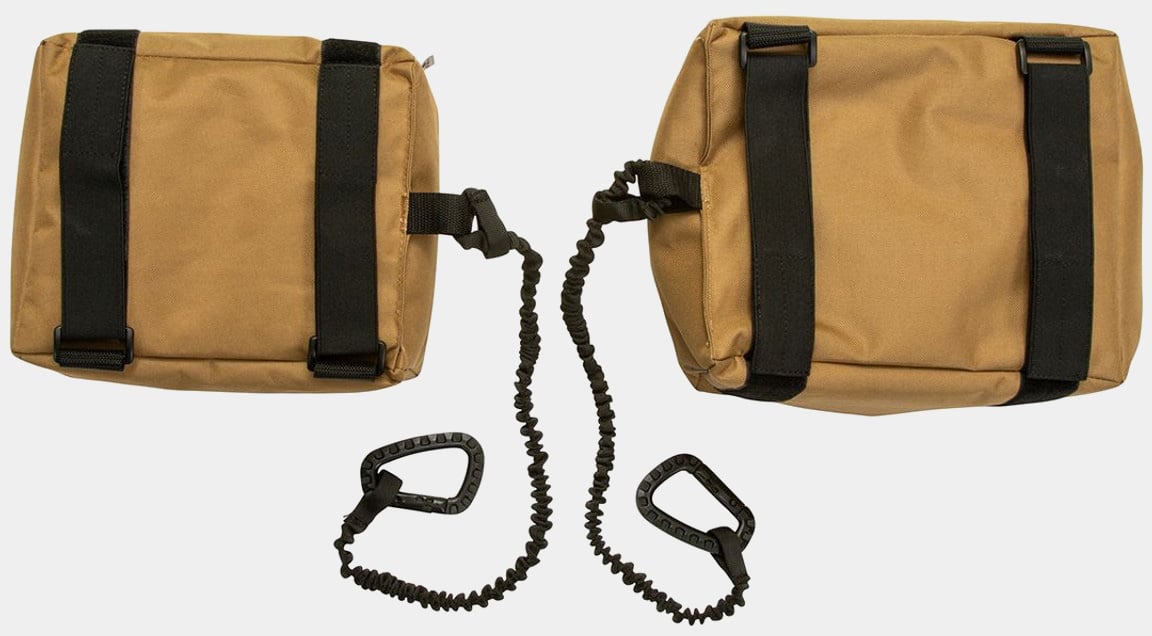California-Compliant Echelon Pistols

Readers of this site are likely familiar with Springfield Armory’s excellent Echelon handgun, thanks not only to the exceptional level of interest the gun has generated, but also due to previous coverage and shooting impressions from our team of expert gunwriters. Pistoleros in the Golden State recently got some good news in that they’re now (finally) able to purchase an Echelon of their very own.
The Echelons recently added to “the roster” is something of a paradox. On one hand, it’s an Echelon through-and-through, sharing the same build quality, adaptability, accuracy, and outstanding ergonomics as any other model in the family. On the other hand, it’s clear that this Echelon is a little different, and incorporates a set of safety features not found on the other models that warrant a critical appraisal.
[For more information on the original guns, be sure to read Massad Ayoob’s Springfield Echelon review.]
Today, I’m pleased to bring our readers an inside look at the “California” Echelons — made up of the full-size 4.5F model and the 4.0C compact model, as well as integrally compensated “Comp” versions of each.
The Elephant in the Room
Undoubtedly, many of our readers are apt to file the California compliant Echelon under the category of a thing that should not be. We can talk until we’re blue in the face about the rules imposed by the state’s Department of Justice being constitutional infringements on the Second Amendment, etc. Ultimately, this is all cold comfort to California’s shooters, who at the end of the day find that their purchase options are nevertheless constrained.
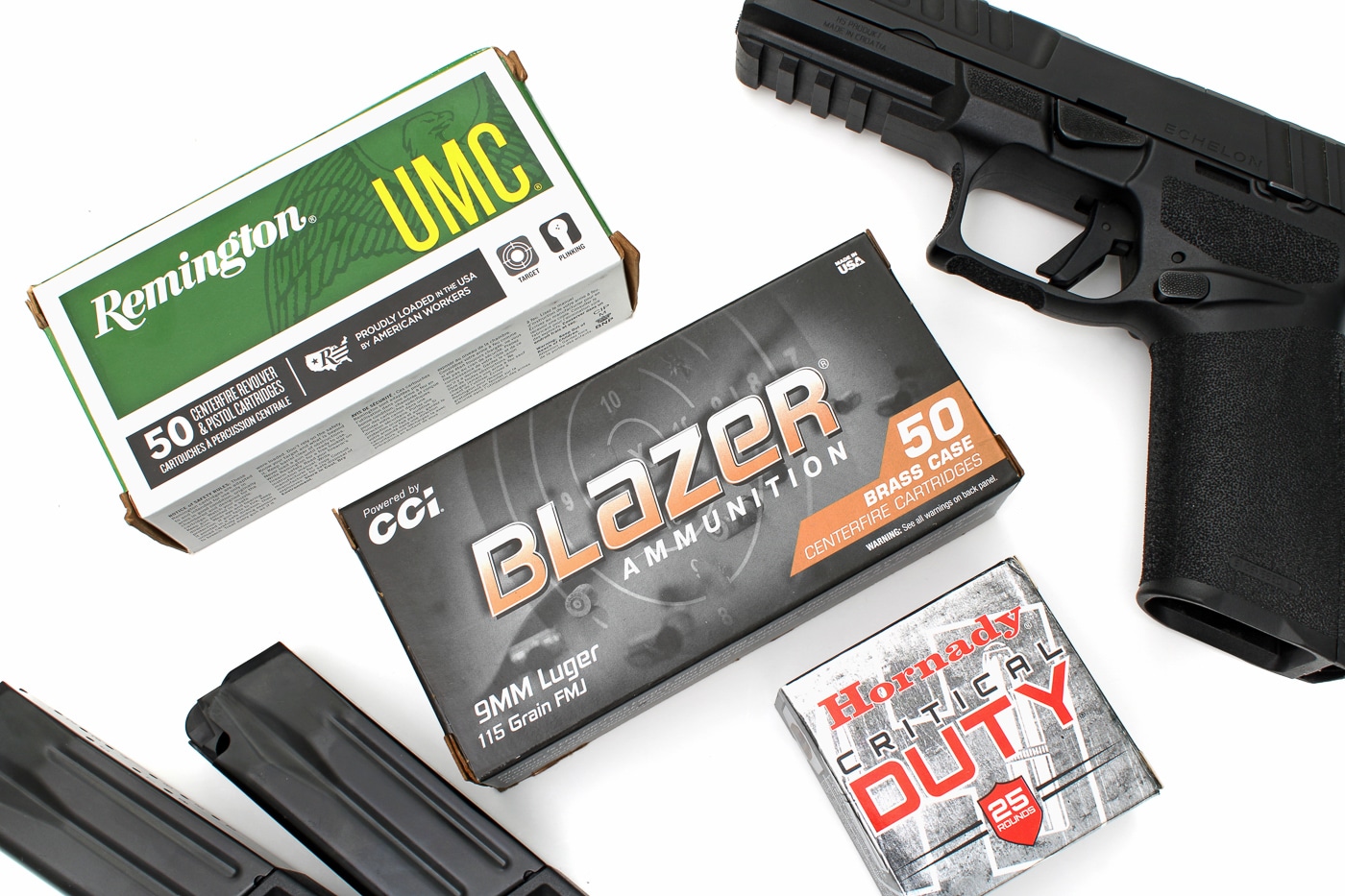
So, yes: the safety features of the “California” Echelon are legally imposed. However, let’s evaluate some of the big ones individually.
First, this Echelon has a magazine disconnect safety. Long before California’s bureaucrats decided to moonlight as firearms designers, the feature could be found on a number of historical guns, including many of John Browning’s designs like the P.35, certainly, but also in his model 1910 and the “pocket hammerless” models of 1903 and 1908. The mechanism has also been incorporated into military sidearms, including the Star model BM.
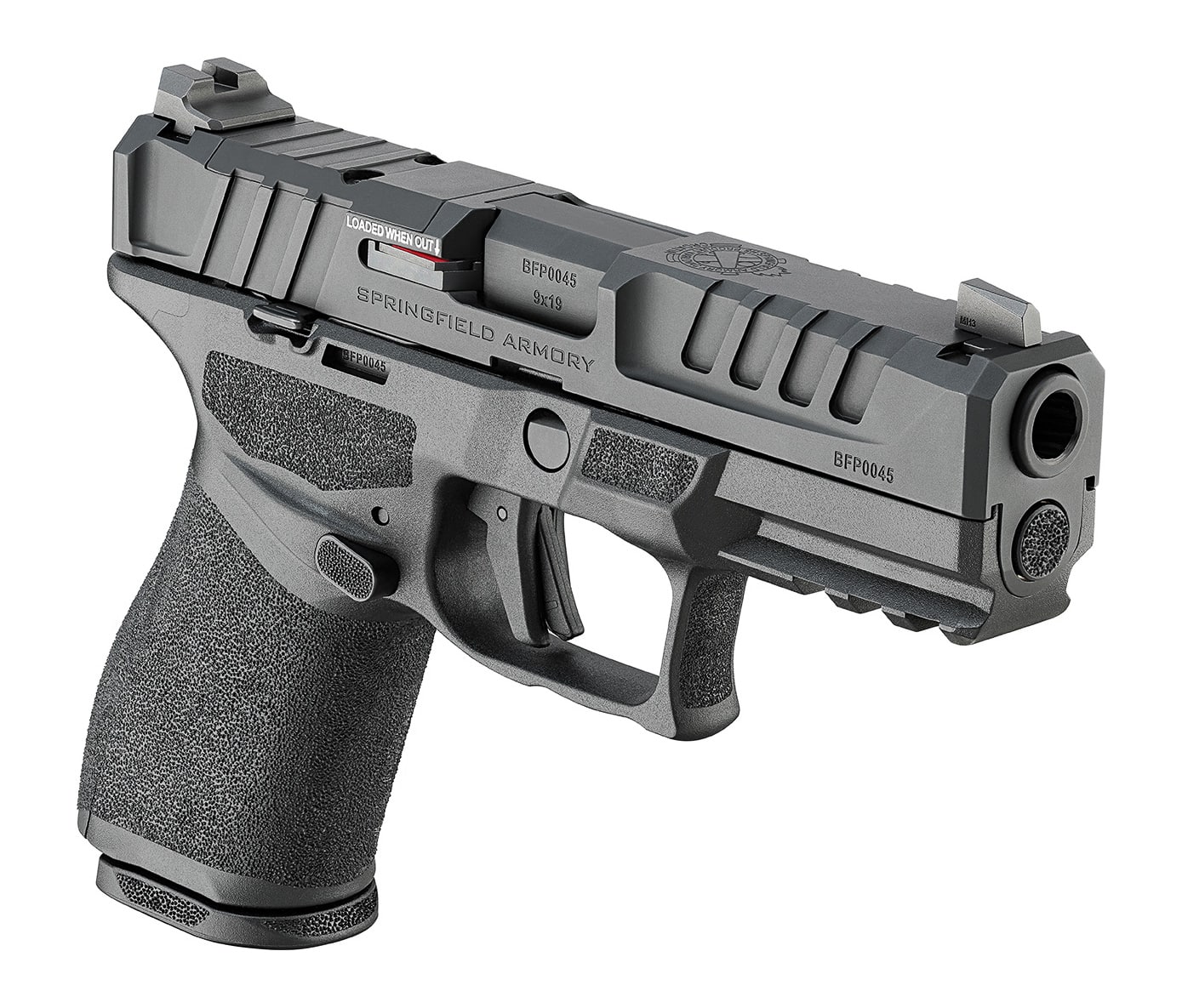
To learn more about the magazine disconnect safety, I also picked the brain of Springfield Armory’s Senior Product Manager, Collin Stedke. In specific, I was curious if the mechanism introduced any weight or creep to the trigger, as was famously a knock against the original P.35. As Collin emphatically replied, “The magazine disconnect does not interfere with the trigger feel in any way.”
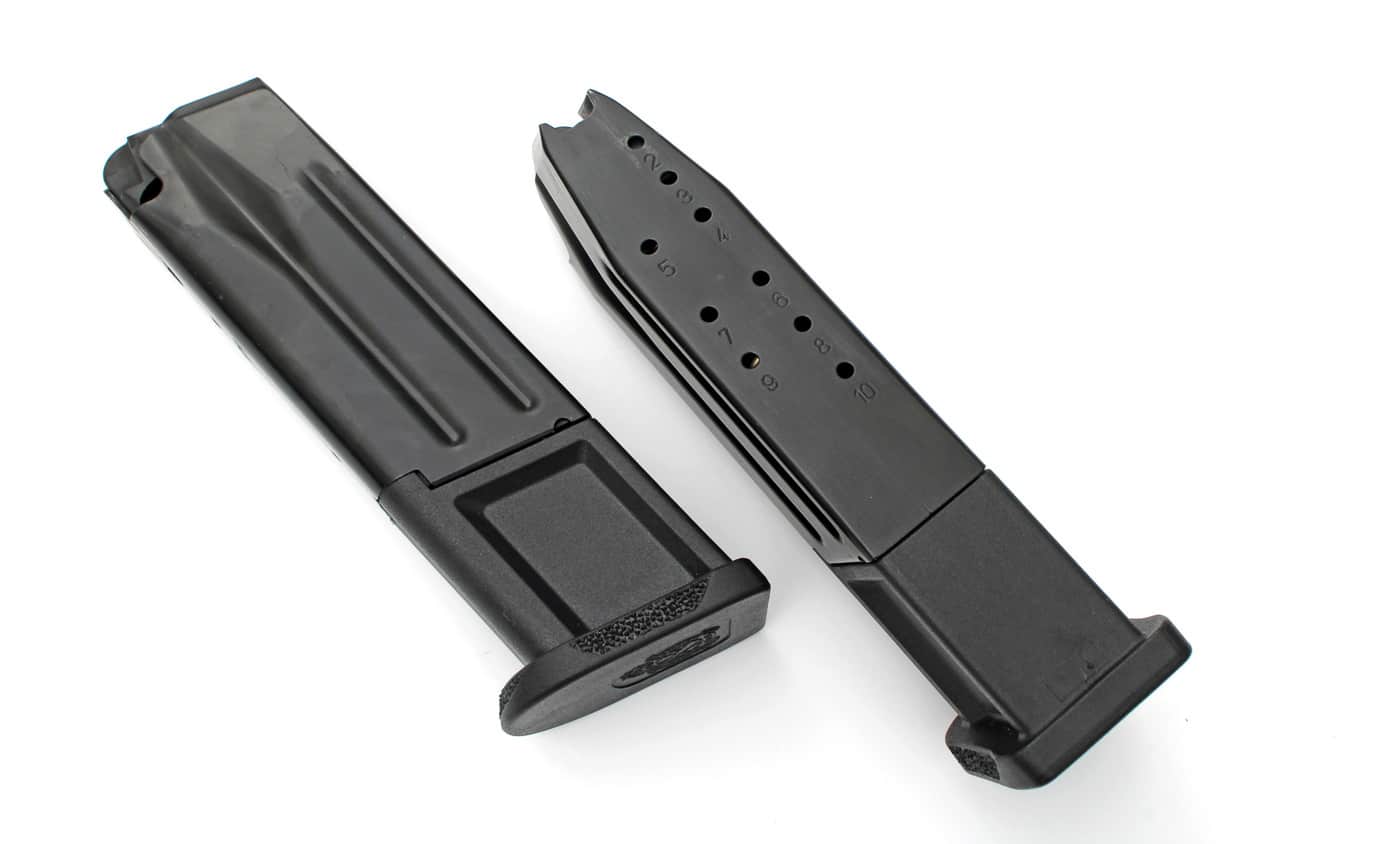
Onto the other big difference between the California-approved Echelon and its siblings: the loaded chamber indicator (LCI). Once again, this feature alone is far from novel; consider that the German P.08 Luger and P.38 models all had LCIs. While it doesn’t take the place of visually inspecting a chamber, many users might find they like ability to swipe a thumb over the side of the slide to determine whether there’s a round in the pipe.
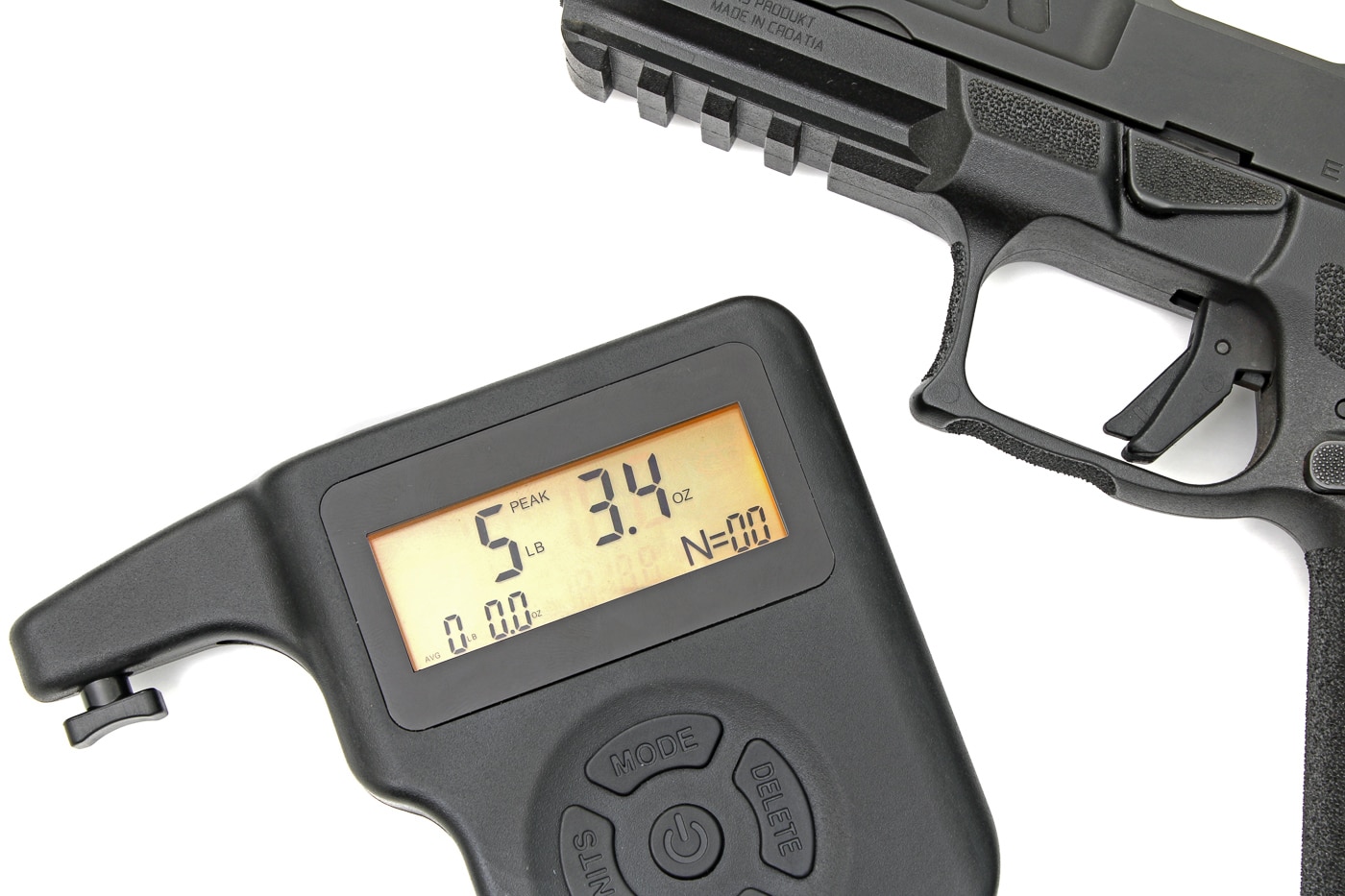
Still, I wanted to hear from Collin — did the addition of the mechanism introduce a potential failure point? Again, he replied in the negative. “The LCI is a simple steel part with a spring,” he told me, “With no substantial loads placed on the part. It should not interfere with longevity or reliability of the pistol.”
My takeaway: the engineering in this particular Echelon meets the needs of some extremely picky regulatory requirements and at the same time sacrifices next to nothing in performance.
First Impressions
Like many residents of the Golden State, I’d been monitoring the roster, hoping I’d see Echelons among the (scant) number of new handguns available for sale. Now that it’s here, I can tell you it was worth the wait. I personally tested out the full-size 4.5F model with the 4.5” barrel. The 4.0C features a shorter 4” barrel and a shorter height grip frame. As noted, both versions are also offered as “Comp” models as well.
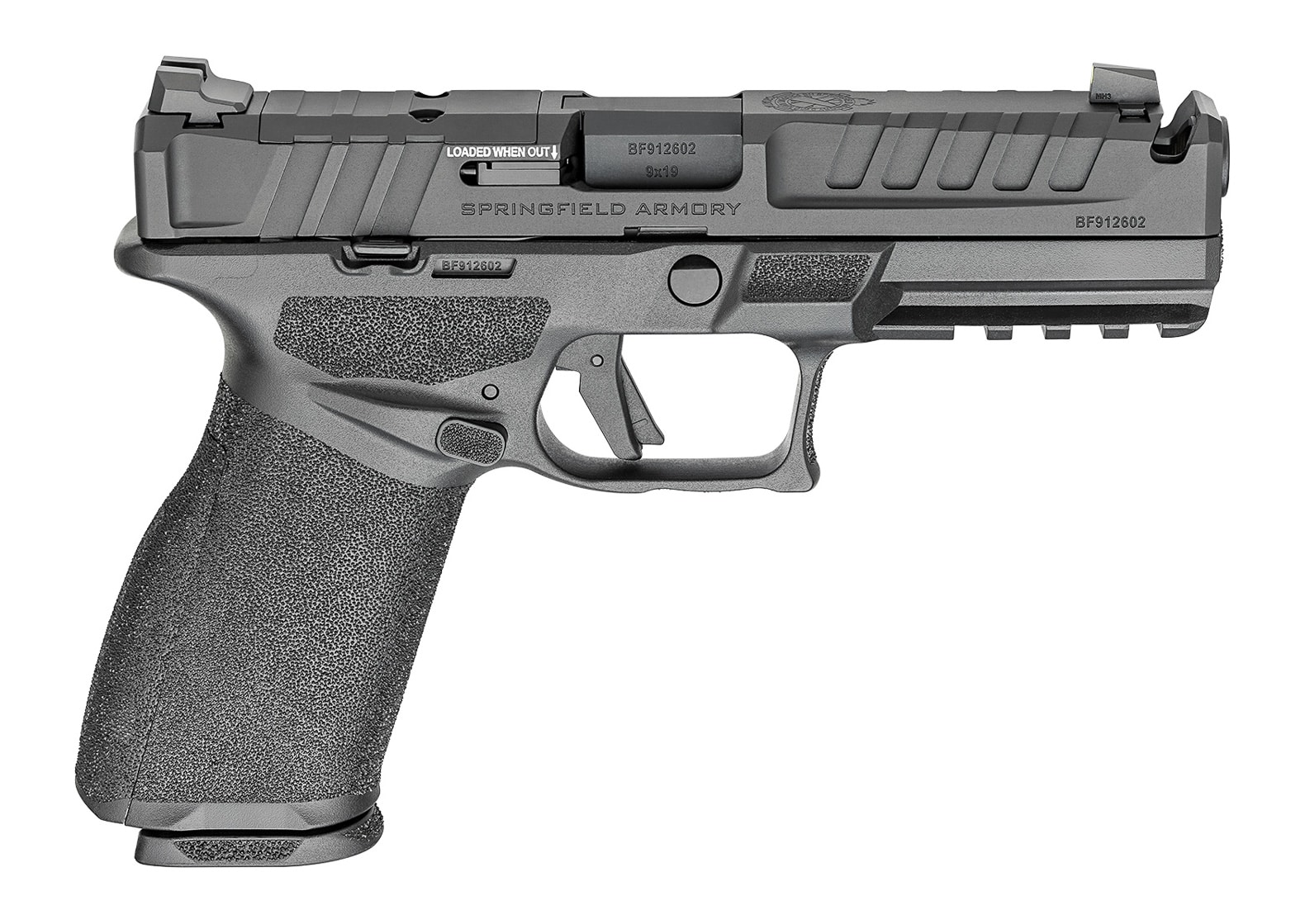
Note that I don’t want to re-tread covered ground; likely you already know about the Springfield Armory Central Operating Group that serves as the heart of the design, as well as the Variable Interface System that makes a staggering number of red dot optics “plug and play” on the platform. Instead, I want to tell you why I think the platform is special, and what I came to enjoy over the process of shooting about a thousand rounds through it.
First, the gun is an ergonomic marvel. I was expecting this to be the case, but you really need to have this thing in hand to appreciate it. One might think that’s a function of being able to custom-tailor the firearm with three different grip module sizes and three different backstraps for nine total configurations. And sure, that helps.
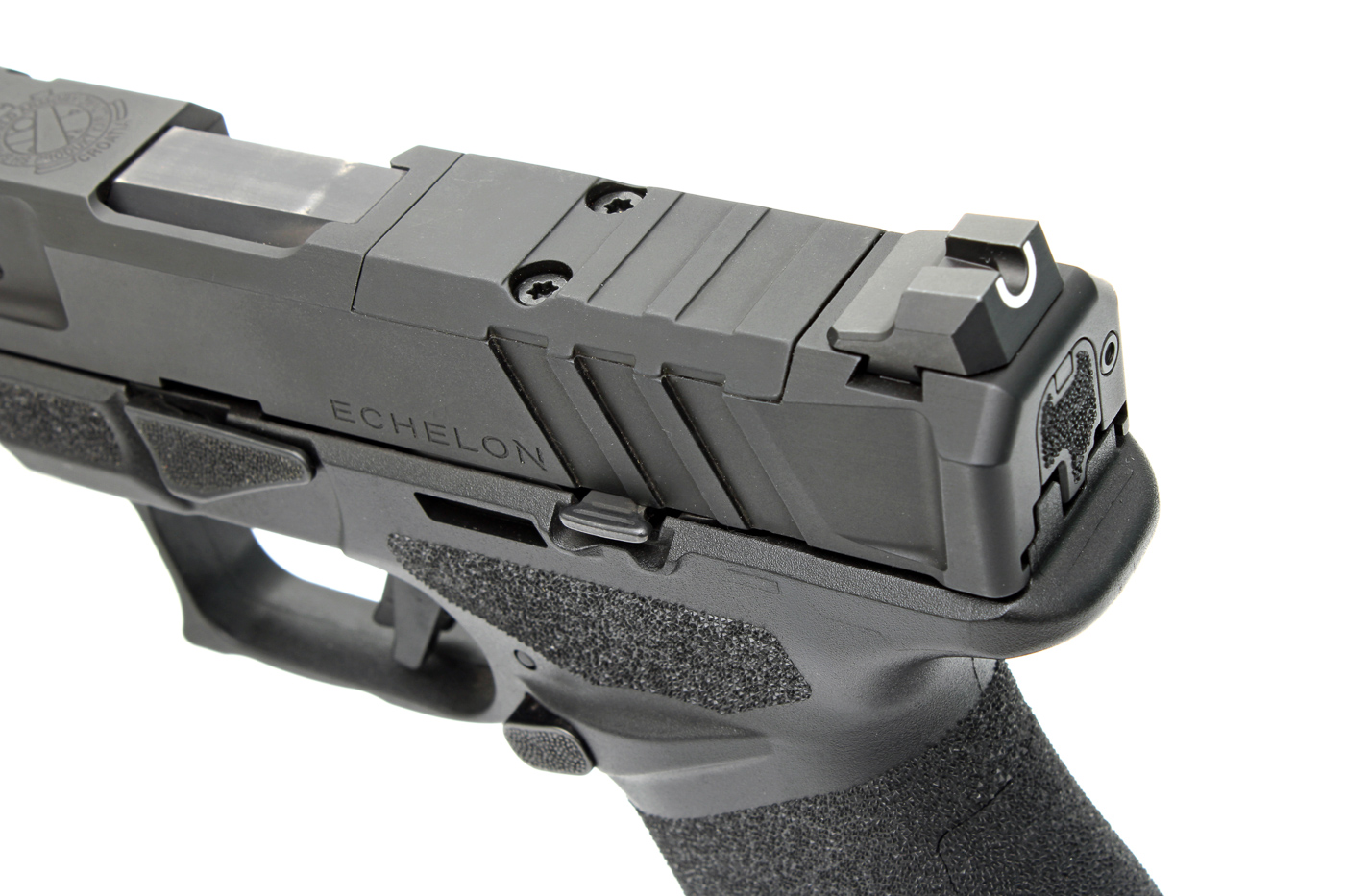
To be frank, however, as someone who’s shot as long as I have, and despite being small-handed, I’ve learned to become comfortable shooting everything from itty bitty mouse guns to monster magnums. The medium frame / medium backstrap configuration was my particular Goldilocks combination, but having tried various Echelon grip combinations from big to small, let me tell you: they all felt pretty damn good.
Without naming names, there’s a particular brand of polymer pistol I’ve never cared for, namely because most of their frames feel like I’m holding a TV remote lengthwise in my hand. The Echelon, however, is nicely rounded and radiused, so recoil is vectored evenly throughout my hand rather than into the knuckle at the base of my thumb. A big plus.
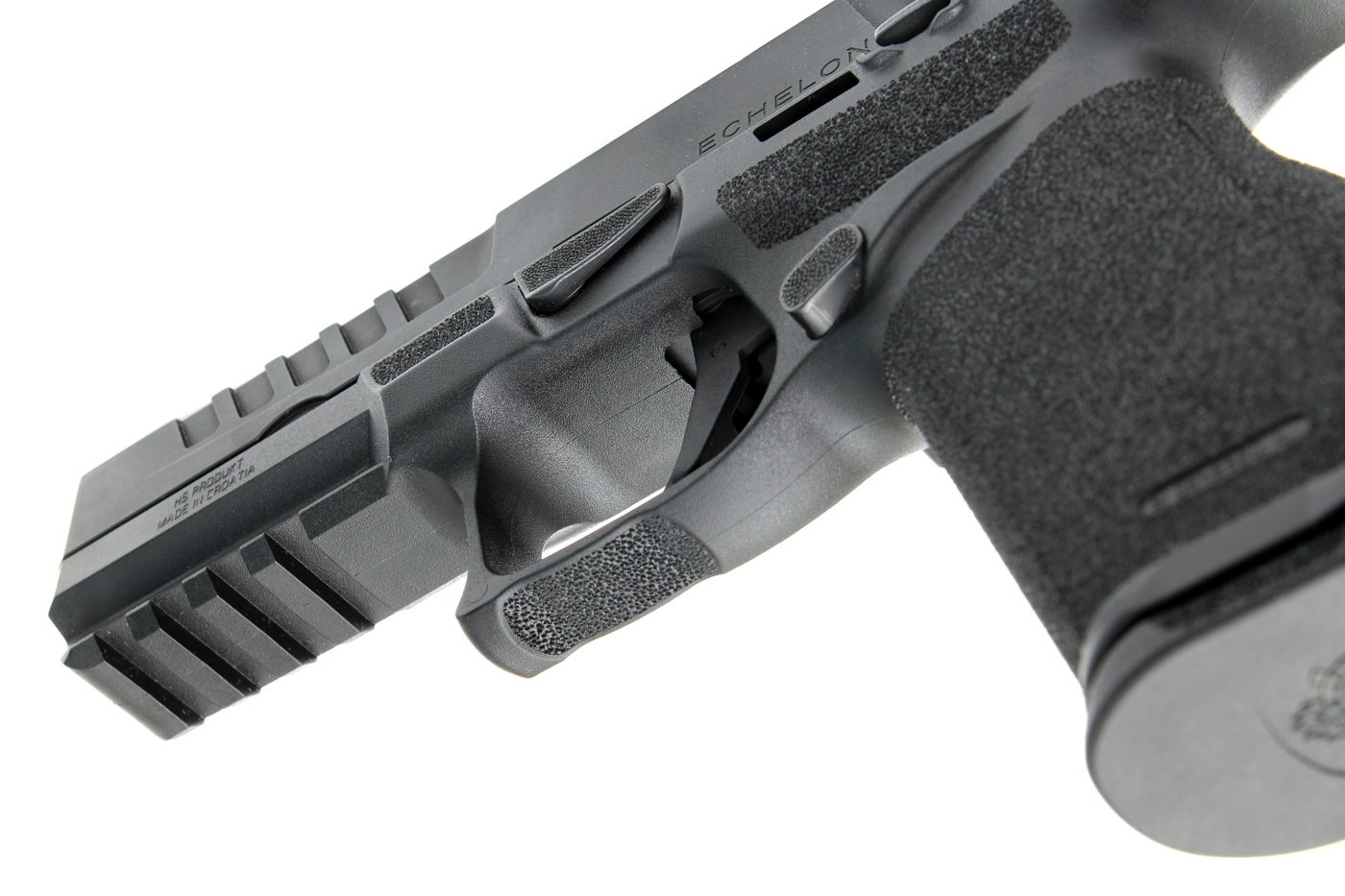
On top of that, there are Adaptive Grip Texture textured areas just about everywhere on this gun. As a result, however you choose to hold this pistol, the gun is ready to work with you. The cool kids who like their thumbs-forward grip will find pads forward of the takedown lever (and on the lever itself) to anchor their digits. Dinosaurs like me who still prefer the “crossed thumbs” grip will find similar texturing above the magazine release. Additionally, however you like to anchor your non-dominant index finger around the trigger guard, you’ll find the Echelon has a place for you to secure it. What’s the result of all of this? Extreme consistency in grip, draw, and recoil recovery.
Another plus I haven’t seen much of in print, but one that bears mentioning: the reset on this Echelon is crisp and short. I was pretty amazed that slide of the Echelon only needs to be racked about a half inch rearward to reset the trigger when dry firing: a tremendous boon when it came to chasing mastery. Out of the box, the trigger is darn good for a striker-fired, duty grade type platform — it won’t put your tuned 1911 out to pasture, but it’s easily mastered, with about three pounds of pressure to get to a discernible wall and another two and some change to trip the sear. My digital trigger gauge registered an average of 5 pounds, three ounces, with about an eighth of a pound variance across all pulls.
Accuracy and Ammunition Testing
First and foremost, this gun flat-out ran. When I took the Echelon out of the box, I gave it a few drops of oil on the slide rails and racked it a few times, but that was it. It has since digested about 1,100 rounds of factory ammo from various manufacturers with a number of bullet profiles — with only one half-assed cleaning in the middle of it all, mainly to re-lube the gun. It has yet to choke on a round.
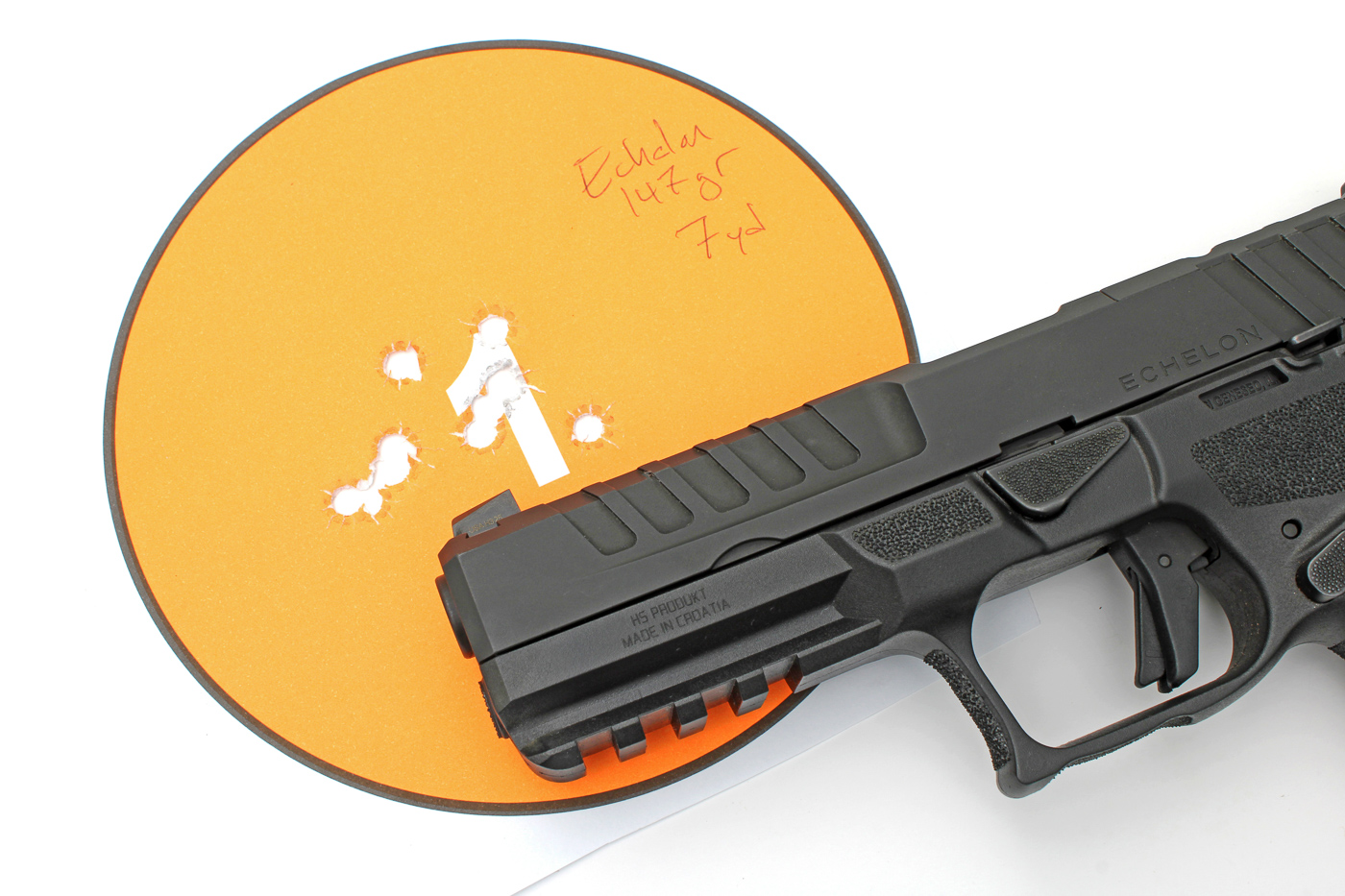
When it came to formally evaluate my Echelon, I tested three different brands of ammo, shot over Springfield Armory’s own Lightweight Bench Rest Bag Set. Those were the Blazer Brass 115-gr. FMJ, the Hornady Critical Duty 135-gr. “Flexlock” JHP, and Remington UMC’s 147-gr. FMJ. Velocity was measured with a Garmin Xero C1 Pro chronograph and averaged across 15 rounds. Targets were set at 50 feet, with five separate five-round groups fired per ammo type.
While the gun was extremely accurate, factoring the “human factor,” I suspect my “best four” out of every five round group is a more representative metric of what a user can expect from the Echelon in terms of mechanical accuracy. Or, very likely, what a shooter with better eyes and a steadier hand might accomplish.
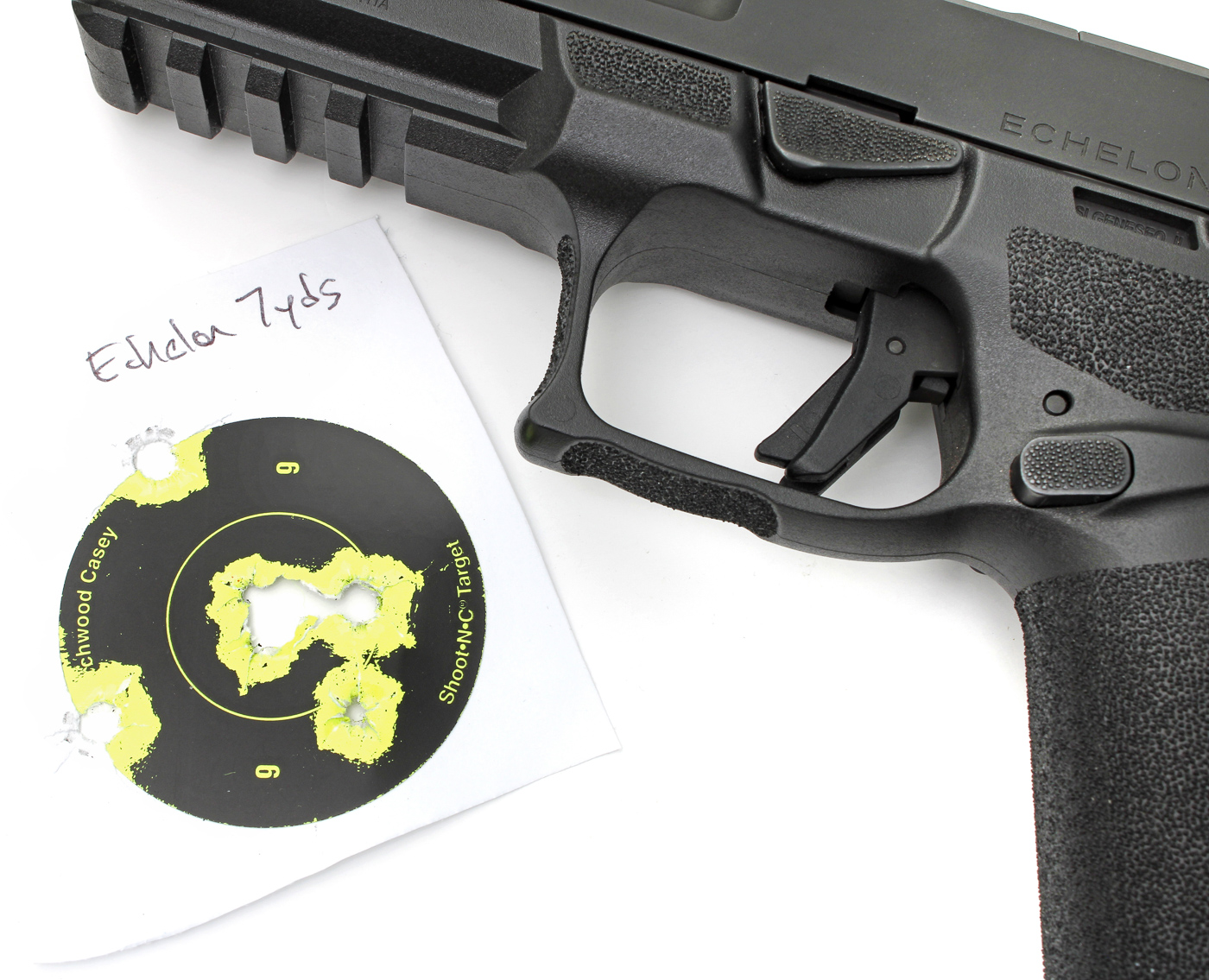
The pistol’s U-Dot sighting system works great in low-light conditions, and the big ‘ol tritium front is virtually dummy proof for defensive shooting: put the dot where you want the bullet to go, and press the trigger. That philosophy routinely provided me with silver dollar sized groups at the 7-yard line and hits on steel plates out to 50 yards.
The Wrap Up
For our readers in California, I’m happy to report we finally have access to this superlative pistol, and it was a joy to really get to know this platform over the course of several range sessions. That we get a pistol as assiduously designed as the Echelon is a benefit to all of us.
As for me, let me end simply by saying this is the Echelon I get to have, and based on what I can do with the platform, I’m darned glad I have it.
Editor’s Note: Please be sure to check out The Armory Life Forum, where you can comment about our daily articles, as well as just talk guns and gear. Click the “Go To Forum Thread” link below to jump in and discuss this article and much more!
Join the Discussion
Featured in this article
Read the full article here



